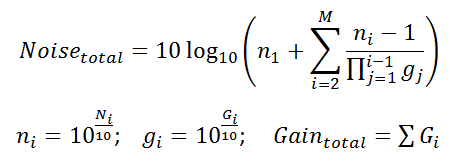

Get to know what your video looks like at difference settings. So there’s little point in adjusting both of them.
DB GAIN CALC ISO
The bottom line is that ISO and gain are for all practical purposes the same thing. You could increase the top value to 3200 for ISO or 36 db for gain or whatever values you choose. If you change your ISO or gain values, you probably want to leave the 0 db gain or the lowest ISO value as it is since that is the optimal value. Again each of these values can be changed in the menu systems of more sophisticated cameras. Typical is 0 db gain, 9 db gain, and 18 db gain. Instead of setting the ISO levels, you could set the gain levels.

So changing the ISO setting from 100 to 400, adds two stops of light (doubled and doubled again.) The down side is more grain in the video image. Every time you double the ISO you add an f-stop. You might, for instance, set the ISO levels to be 100, 400, 800. In some cameras you can assign switches to change the ISO or the gain. It’s really just the amount of gain applied to the output of the sensor that adjusts the sensitivity. ISO in digital cameras was intended only to provide some continuity from film cameras. Gain is the photographic equivalent to push processing of film where you force the increase in sensitivity by removing information from the underexposed background. If these are not enough, it raises the ISO of the camera which degrades the image by adding grain. If there is not enough light, the meter opens the iris and increases the shutter. Cameras have built-in light meters which measure the light and in auto mode set your camera to an f-stop and shutter speed to make an ideal exposure. The meter measures the amount of light and its internal computer indicates which f-stop and shutter speed is needed for a particular ISO. Light meters must be adjusted to the ISO. The major reason to use ISO rather than gain is to correlate the camera sensitivity with a light meter. Like film, the lower the ISO rating of the camera sensor, the better the image quality is going to be. They allow for more and larger pixels to be packed onto the image sensor, producing smoother, grain-free images at higher ISO settings sometimes as much as 1600 ISO.
DB GAIN CALC FULL
The larger Full Frame sensors are the size of a 35mm frame. On most digital cameras this is ISO 100, although some high end DSLRs the ISO rating is as low as 25. Digital camera image sensors are designed to perform best at the lowest ISO, just like with film. Smaller sensors produce more digital noise at higher ISOs (like 800). Larger sensors produce less noise or grain. The size of the digital camera’s image sensor dictates what ISO setting provides the least amount of digital noise. The cost is degraded images which show more grain. In many video cameras and DSLRs, you can dial in the ISO which is helpful when you need more light sensitivity. Higher quality images required a low ISO rating. Larger ISO numbers required much less light, but looked grainy. The smaller ISO ratings required more light, but had a finer grain and created better images. The ISO determined how much light was required. It was also available in various ISO/ASA ratings from 24 to 200. For movies it was available in 8mm, 16mm, and 35mm. Kodachrome, for instance, was a Kodak film used in both cinematography and still photography. You may not remember film, but in those days all films were rated with an ASA rating which today is called an ISO rating. There are differences between the two settings, but for all practical purposes, they control the same aspect of video. Which one should you use or should you use both? The output power has fallen to half the maximum or mid band power.įigures often quoted on attenuators designed to reduce the outputs on signal generators by measured amounts.Some cameras and camcorders have both an adjustable ISO setting and a Gain setting. The output voltage has fallen to 0.707 of the maximum (mid band) output.ī. −3dB Commonly used for limits of bandwidth in amplifiers, indicating the points where:Ī. ☑dB The least noticeable change in audio levels, also used for the limits of bandwidth on high quality audio amplifiers. Commonly Encountered dB ValuesĠdB The reference level to which all +dB and −dB figures refer. Likewise losses due to circuits such as filters, attenuators etc. This can produce some very large numbers, but the total of individual gains expressed in dBs would be the sum of the individual gains:

DB GAIN CALC SERIES
An advantage of using dBs to indicate the gain of amplifiers is that in multi stage amplifiers, the total gain of a series of amplifiers expressed in simple ratios, would be the product of the individual gains:


 0 kommentar(er)
0 kommentar(er)
